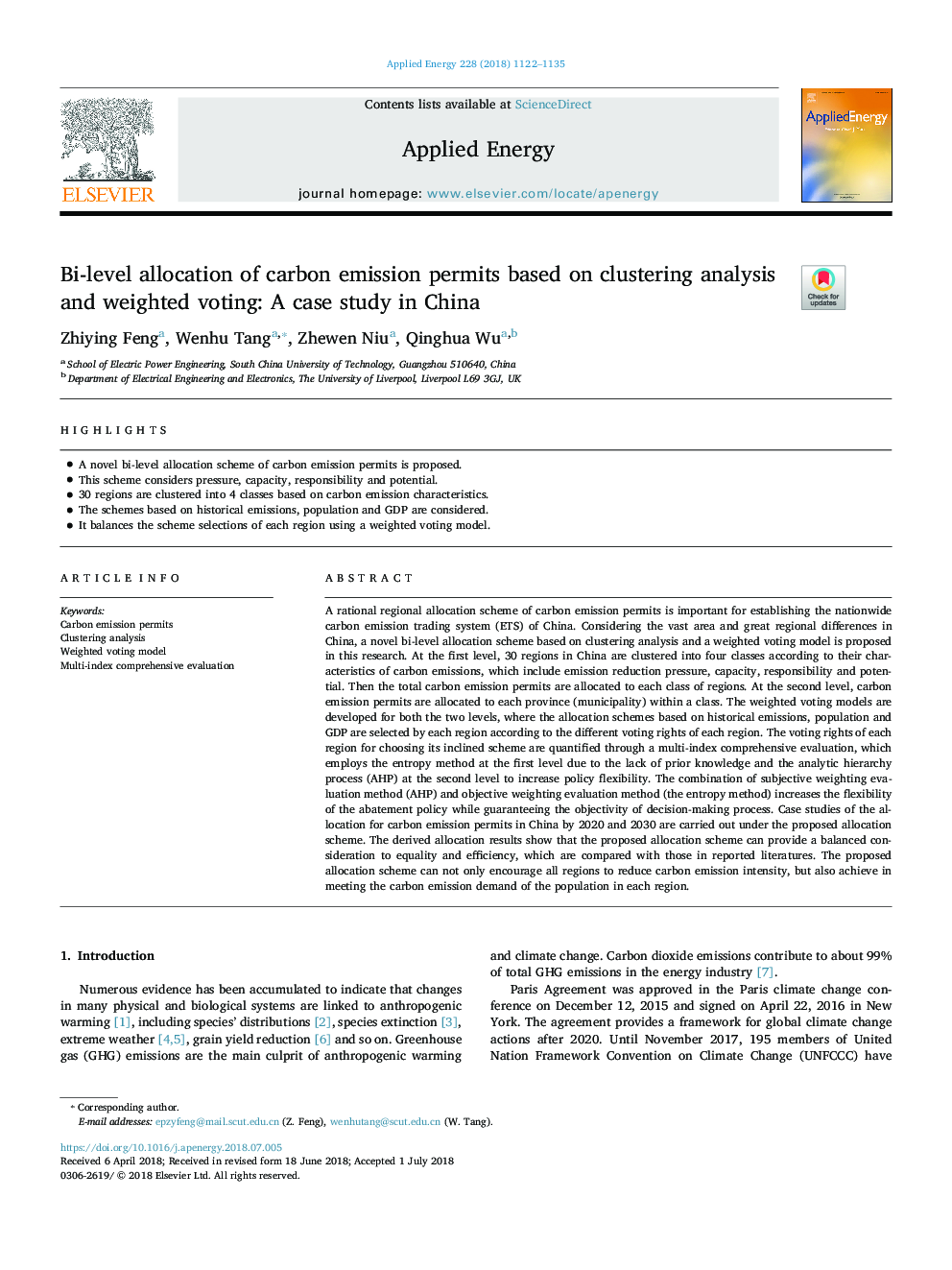| کد مقاله | کد نشریه | سال انتشار | مقاله انگلیسی | نسخه تمام متن |
|---|---|---|---|---|
| 6679806 | 1428063 | 2018 | 14 صفحه PDF | دانلود رایگان |
عنوان انگلیسی مقاله ISI
Bi-level allocation of carbon emission permits based on clustering analysis and weighted voting: A case study in China
ترجمه فارسی عنوان
تخصیص مجوز انتشار کربن بر اساس تحلیل خوشه ای و رأی گیری وزنی: مطالعه موردی در چین
دانلود مقاله + سفارش ترجمه
دانلود مقاله ISI انگلیسی
رایگان برای ایرانیان
کلمات کلیدی
انتشار کربن مجوز، تجزیه خوشه ای، مدل رای گیری وزنی ارزیابی جامع چند شاخصه،
موضوعات مرتبط
مهندسی و علوم پایه
مهندسی انرژی
مهندسی انرژی و فناوری های برق
چکیده انگلیسی
A rational regional allocation scheme of carbon emission permits is important for establishing the nationwide carbon emission trading system (ETS) of China. Considering the vast area and great regional differences in China, a novel bi-level allocation scheme based on clustering analysis and a weighted voting model is proposed in this research. At the first level, 30 regions in China are clustered into four classes according to their characteristics of carbon emissions, which include emission reduction pressure, capacity, responsibility and potential. Then the total carbon emission permits are allocated to each class of regions. At the second level, carbon emission permits are allocated to each province (municipality) within a class. The weighted voting models are developed for both the two levels, where the allocation schemes based on historical emissions, population and GDP are selected by each region according to the different voting rights of each region. The voting rights of each region for choosing its inclined scheme are quantified through a multi-index comprehensive evaluation, which employs the entropy method at the first level due to the lack of prior knowledge and the analytic hierarchy process (AHP) at the second level to increase policy flexibility. The combination of subjective weighting evaluation method (AHP) and objective weighting evaluation method (the entropy method) increases the flexibility of the abatement policy while guaranteeing the objectivity of decision-making process. Case studies of the allocation for carbon emission permits in China by 2020 and 2030 are carried out under the proposed allocation scheme. The derived allocation results show that the proposed allocation scheme can provide a balanced consideration to equality and efficiency, which are compared with those in reported literatures. The proposed allocation scheme can not only encourage all regions to reduce carbon emission intensity, but also achieve in meeting the carbon emission demand of the population in each region.
ناشر
Database: Elsevier - ScienceDirect (ساینس دایرکت)
Journal: Applied Energy - Volume 228, 15 October 2018, Pages 1122-1135
Journal: Applied Energy - Volume 228, 15 October 2018, Pages 1122-1135
نویسندگان
Zhiying Feng, Wenhu Tang, Zhewen Niu, Qinghua Wu,
